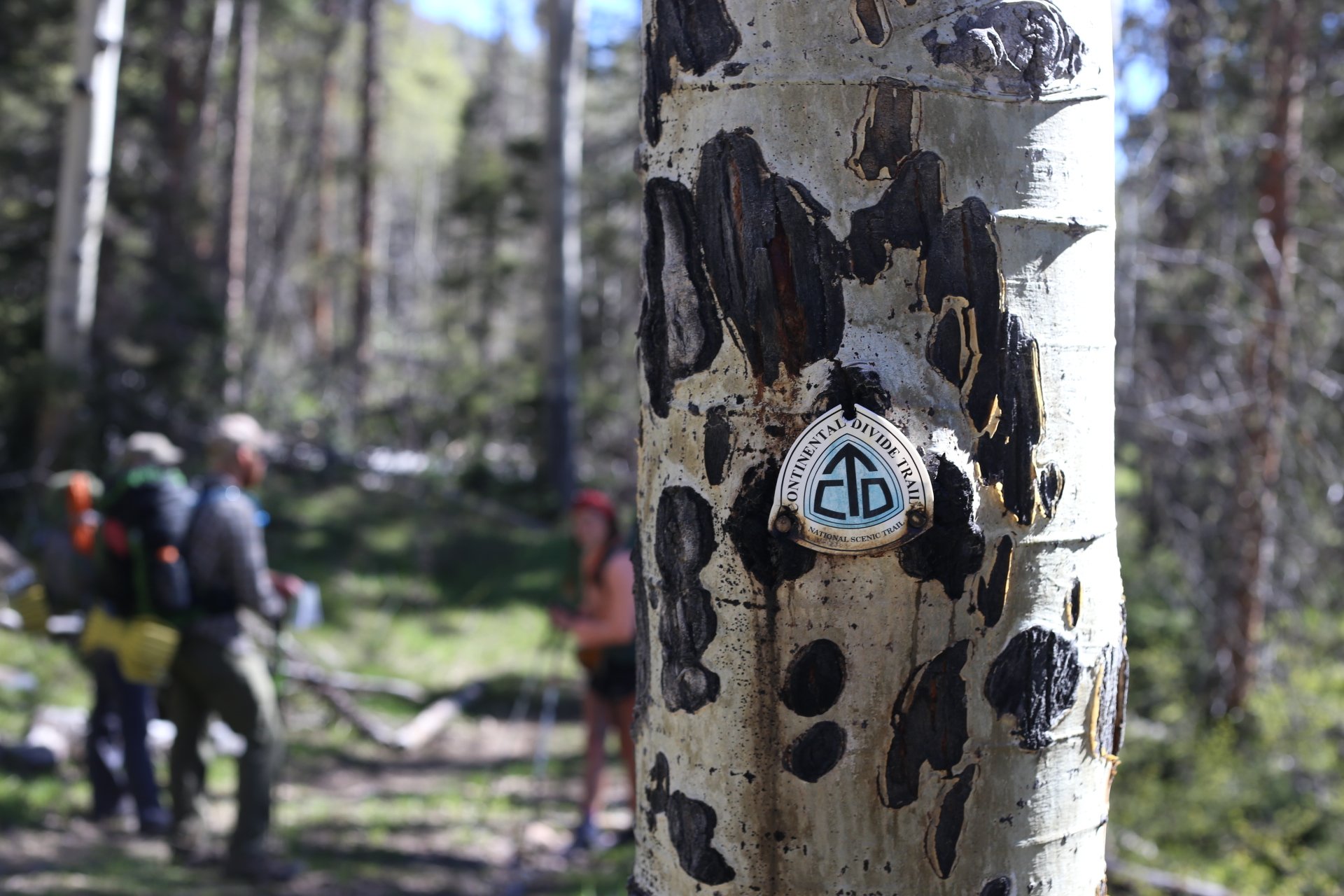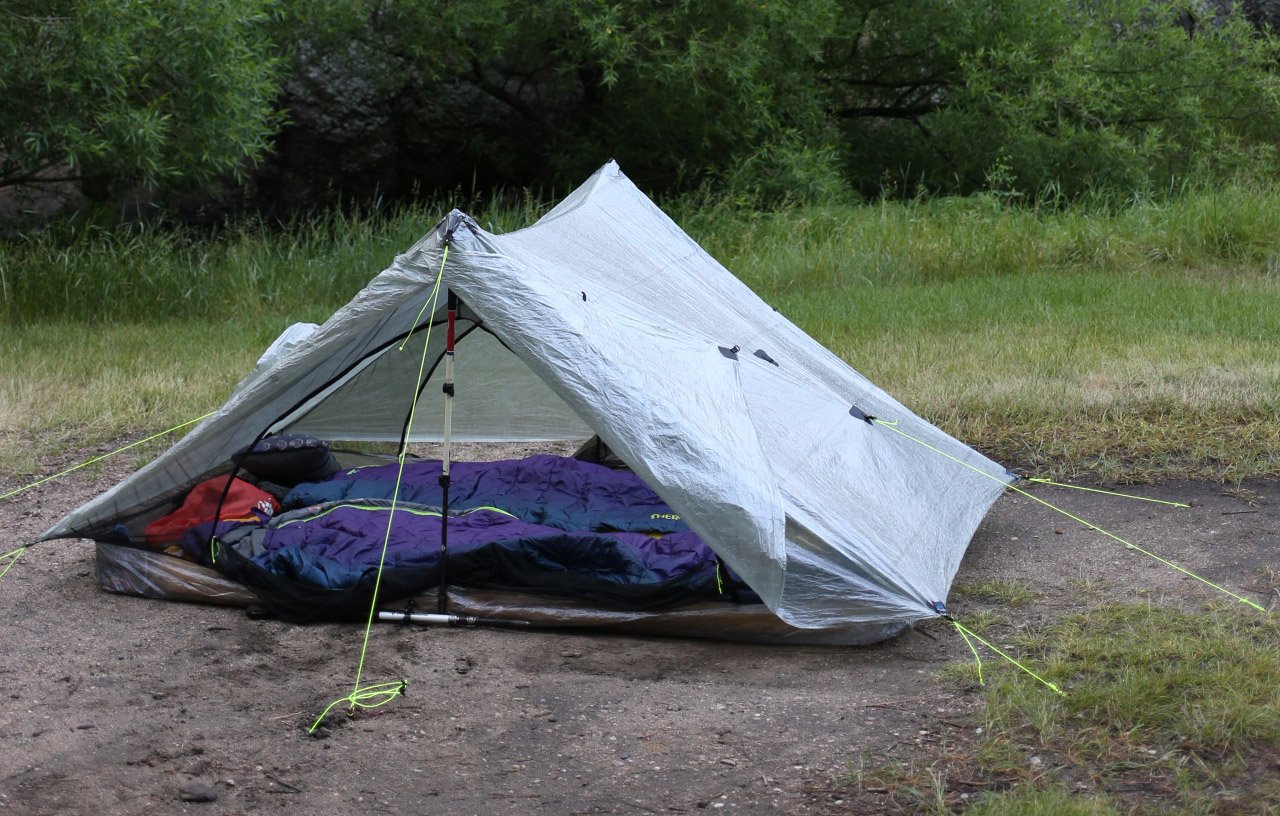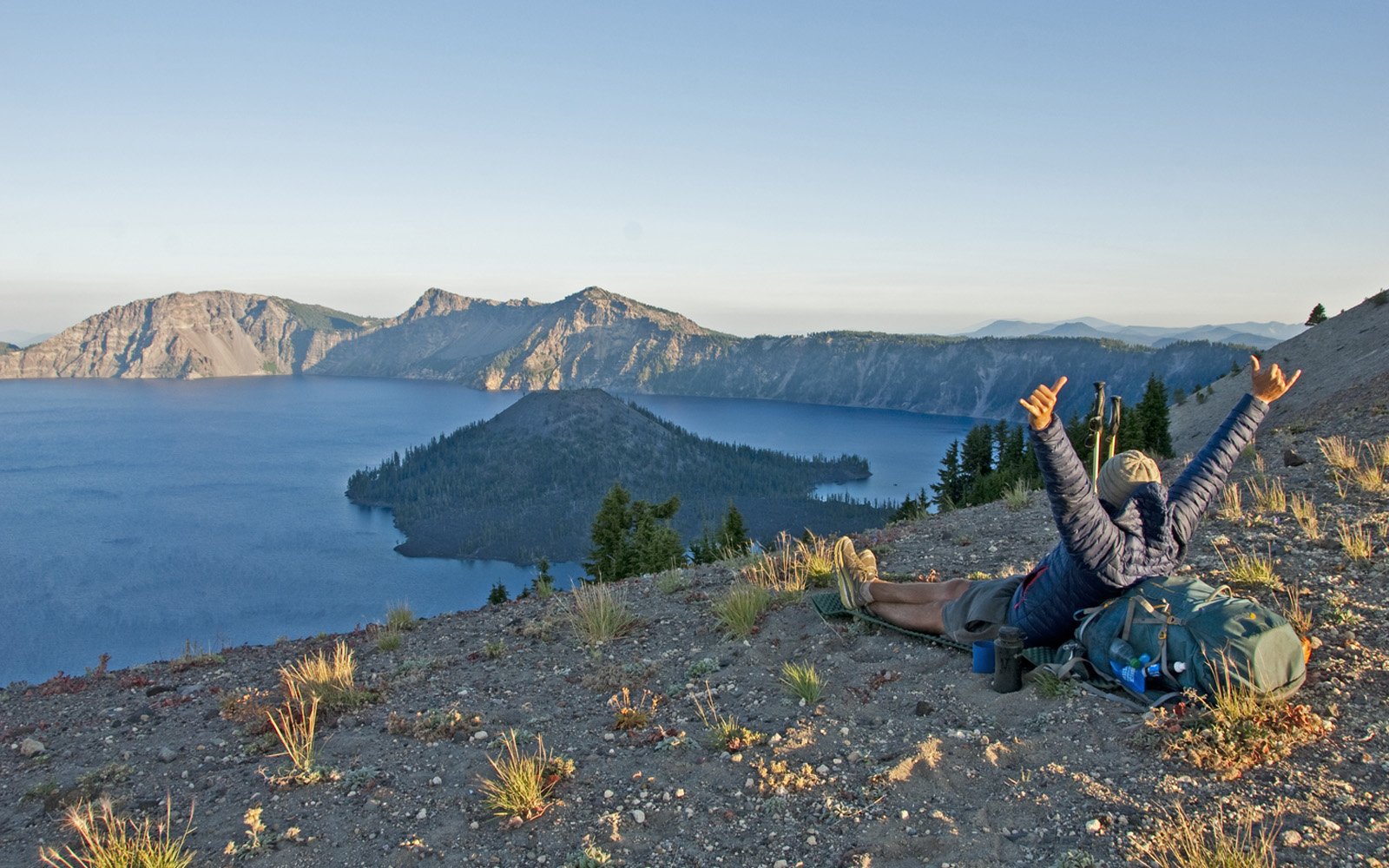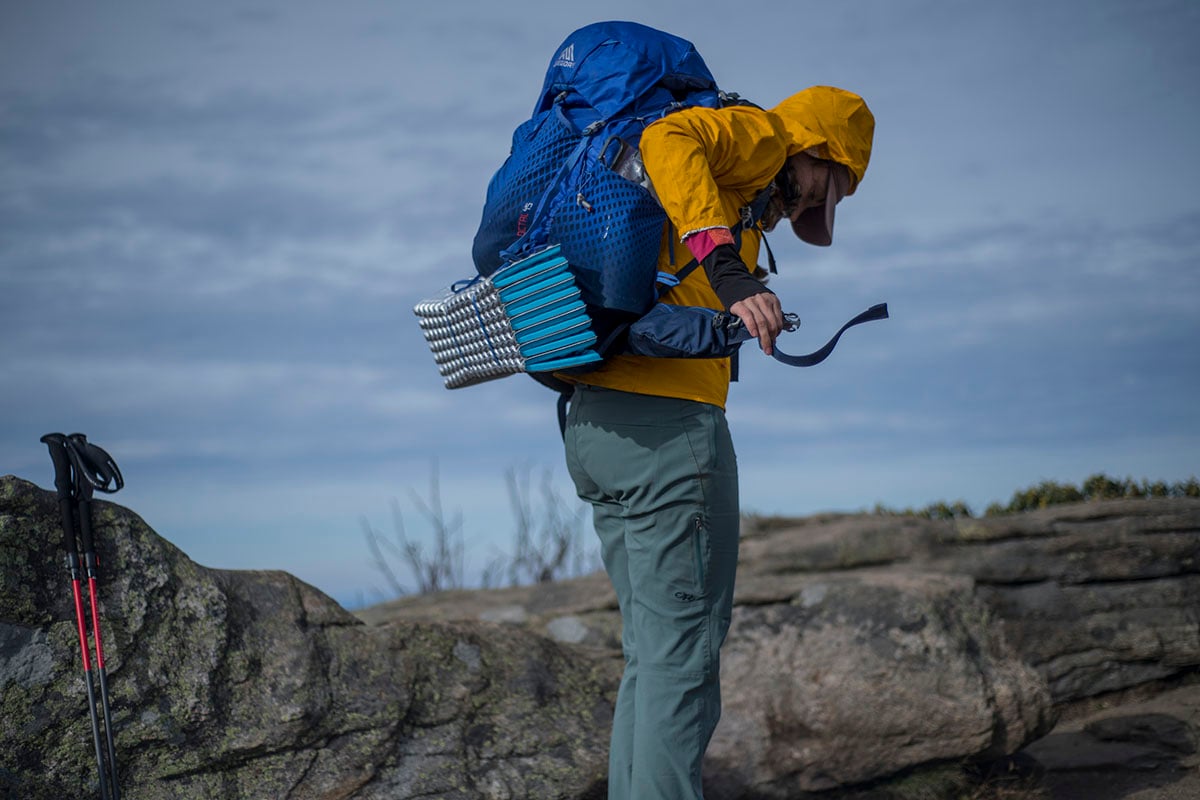Sarah “Hermes” Wolfson, 25, had been struggling with chronic depression for half of her life by the time she decided to hike the 2,200-mile Appalachian Trail (AT) in 2020. She’d heard about thru-hiking years before, and she always felt an attraction to the idea of propelling herself to unfathomable distances with nothing more than sheer grit and determination. If she could make it from Georgia to Maine on her own two feet, what else would she be capable of doing? Maybe if she made it to Katahdin, things would be different. It seemed like the AT could provide an opportunity for Wolfson to forge a new path, and she was finally ready to make a change in the Spring of 2020.
And then the pandemic hit. Covid-19 stalled her dreams of hiking the Appalachian Trail, and seemingly suffocated her ambition. All of the months of preparation fizzled out, propelling her into uncertainty. Throughout the year, much like people the world over, Wolfson’s life seemed like it was stuck. Yet, she managed to cling to the hope that the following year, pandemic permitting, she could bid for the AT. And that’s just what happened.

Beginning the Appalachian Trail
The trees were barely budding when Wolfson made it to Georgia for the beginning of her hike in 2021. A nip hung in the air like winter could return at any moment. She wondered how the drastic change to her lifestyle would affect her relationship with sadness, anxiety and the other daily symptomatic battles she waged against chronic depression. Perhaps, if all the pieces of her life began to line up, like the trail stretching before her, the dark cloud over her head would dissipate. She longed for the clarity of feeling light and capable—capable of seeing the silver linings that strung the days together.
Wolfson is one of 280 million recorded people who struggle with depression across the globe. It’s not uncommon for those with a diagnosis of depression to experience symptoms like extreme sadness, fatigue, loss of interest in activities they’d once enjoyed, and self-critical thoughts. Learning how to manage such symptoms has been a life-long struggle for Wolfson.
In defiance of that depressive voice in her head, the one that doubted her every move and insulted her ambition as worthless, she rallied enthusiasm and determination at the outset of her trek. She’d wanted to complete this pilgrimage to explore the possibility of change—to feel herself as capable of change. But her depressive episodes didn’t stop when she began hiking north.
As she hiked, Wolfson oscillated between making forward progress and halting to heal. She’d pick herself up, dust herself off, and move forward. Then a wave of despair washed over her and created a roadblock: Wolfson recounted, “on trail, specifically, I would tell myself to ‘go hike,’ and then I just generally could not do it. I was really busy having negative thoughts and crying. It gets to a point where I physically feel it. Breathing gets hard.”

Tools for Managing Chronic Depression on Trail
Wolfson was in 7th grade when she first noticed her mood changing. When she got to high school, it got worse. She began taking antidepressants to help her to manage her symptoms when she was in 11th or 12th grade. “It has changed everything for me. I’ve only had positive reactions,” she said.
On the Appalachian Trail, she began developing additional tools to manage her depressive symptoms. With time and space to think and observe as she walked onward, she began taking notice of the nuances in her mental health. Before long, she realized that being able to tell the difference between fatigue from hiking and fatigue from depression was a key component to her success.
If she was fatigued, she knew that she could benefit from a break from hiking. If she was depressed, she might need to find a way to motivate herself to continue walking. Wolfson observed, “it’s not always so clear cut. Sometimes it’s both.” Typically, depression was rearing its head at the same time as negative self-talk, making it heavier and harder to manage than standard hiking fatigue.
Once she noticed that she was having a tough mental health day, Wolfson started to incorporate specific strategies into her process. Journaling was cathartic, giving her a momentary release from the burden of her emotions. Technology helped to stabilize her mood while she walked. “A huge [tool] for me was having podcasts and musicals at the ready. I know for myself when I’m in a funk I just need to listen to comedy. There were specific musicals I had ready as well.”
The trail community helped, too. “Confiding in other people was really helpful,” she recalls. While other hikers couldn’t always relate to Wolfson’s experience, they often provided a safe space to talk about whatever it was that was weighing her down. As the hike wore on, Wolfson became more capable of managing her down days.

The Challenges of Thru-hiking with Chronic Depression
The most challenging part of thru-hiking for Wolfson was dealing with constant change. “At home, if I have a depressive episode, I go to my room for a bit. And when I come out, everyone is still there. Everything is the same. On trail, when I have to do that, I can’t expect others to take time off for me. I think that’s the hard part. When I retreated for a bit, the people changed.” Just as soon as she began building a family, she’d lose it.
The Appalachian Trail is commonly a social endeavor. While it’s possible to hike alone for long stretches of time, if desired, it’s more common for hikers to fall into pace with one another, hiking for hundreds of miles together at a time. The resulting group is often referred to as a “trail family.”
Right as Wolfson was getting into the White Mountains, she was struck with an episode of depression. She took two zero days, then managed to climb her way over Mt. Moosilauke, before she washed it all down with two more zero days. “I love a zero. I love a double zero. But this was a little bit more like I can’t see the light of day. It wasn’t in the schedule. It felt like something I didn’t want to do but I had to do.”
From New Hampshire to Katahdin, Wolfson dipped in and out of trail families, often taking time to care for herself along the way. And, while she knew that she was capable of completing the entire Appalachian Trail through sheer determination, she didn’t want to have to finish it alone. “My biggest regret is that I didn’t finish with my closest friends, which was out of my control.” Depression robbed her of the ending that she desired, but it didn’t stop her from completing the Appalachian Trail.

The Appalachian Trail’s Relationship to Mental Health
Although the Appalachian Trail was full of challenges, Wolfson also found clarity while on trail. As her mental stamina grew, and the muscles in her legs began to bulge, she realized that the outward circumstances weren’t magically going to cure her of depression: “[The Appalachian Trail] solidified the fact that I don’t have control over [depression] and I just have to manage it. Which is kinda freeing because I don’t have to hold myself to this high standard anymore.”
Refocusing on management and not being cured was an important takeaway. “There are things you can do to make sure it’s not out of control but you’re never going to get rid of it really.” In some ways, accepting herself in her entirety allowed Wolfson to get past her emotional limitations.
After completing the Appalachian Trail, Wolfson began to notice additional changes to her self-perception that would follow her into the rest of her life. “I definitely feel more confident—confident in the world, and confident in myself, knowing that I can rely on myself, and do things on my own and be ok.” Thru-hiking instilled determination, focus, and confidence into her daily life.
She also generally found being outside to be a powerful experience. “I definitely think that being outdoors helps me to feel better in general.” Time and time again, studies have shown that spending time outdoors has a positive impact on depressive episodes (although the results may vary between groups of people). Wolfson naturally found herself tuning into this reality along the Appalachian Trail, where she spent the majority of her experience outside.
Ultimately, Wolfson was surprised at the extent of the impact that depression had on her thru-hike, feeling disappointed that she had to get off trail for as long as she did. But she has a hopeful message for other hikers who struggle with chronic depression. “I really do believe that anyone who wants to do the trail can do the trail. It might take different accommodations or time frames or whatever. But I do think if you really want to do it you can.”
However, she added a caveat: “Any problems you have back at home will catch up with you on trail, so don’t do the trail as an escape. You’ll still be the same person on trail, you’re just in a different environment.”
If you or your loved one is struggling with chronic depression, please don’t suffer alone. The SAMHSA National Helpline can be found here. A number of mental health resources can also be found here.
Related Posts:
















